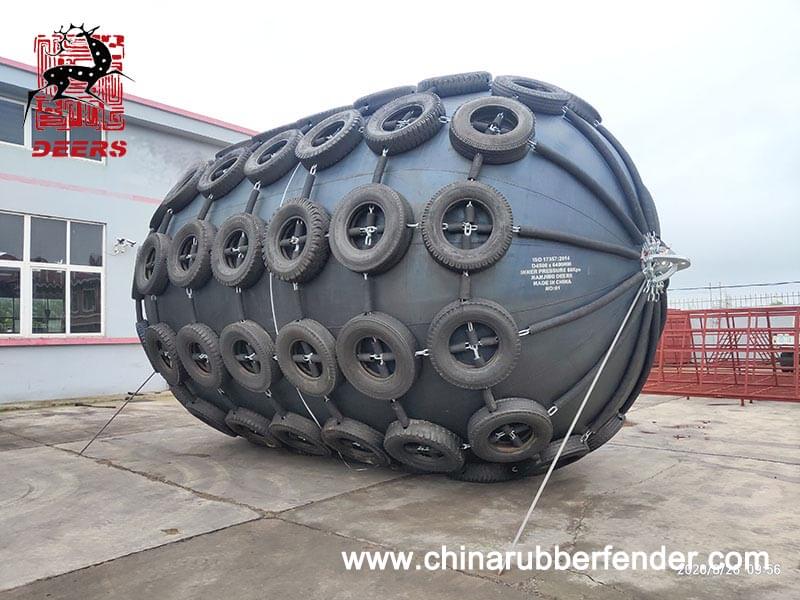Types and advantages of Pneumatic fender
Pneumatic Fenders are the ideal choice for inter ship dealings and port accessories. It’s made of the strong rubber sheet with synthetic-cords. The compressed air inside can keep pneumatic fender to float on water. It’s also as a shock absorber when ship to ship or ship to dock operations. Their deployment is quick and robust. At the time of docking, the pneumatic fenders minimize the risk of damage and safeguard both people and cargo.
Types of Pneumatic Fenders:
There are four common types of pneumatic fenders applied in ships including chain-tire net (CTN) pneumatic fenders; Sling type fenders; low-pressure pneumatic fenders; hydro-pneumatic fenders.
1.CTN pneumatic fender has a network of tires connected with chains in horizontal as well as vertical direction to protect the fender body. As the chains remain in the water all the time so must be made up of corrosion-resistant galvanized materials. These are the simplest and cheaper types of marine fenders which increase the clearance between the structure and the hull to a larger extent.
2.Sling type pneumatic fenders: These are similar to chain type fenders with the only difference that fenders can be slung with even ropes made up of meshed wire strands than chains.
3.Low-pressure pneumatic fenders: These are the type of pneumatic fenders that deliver minimum pressure to the hull by absorbing kinetic energy to a maximum extent by providing maximum contact surface. It has these performances: lightweight, portable fender, low developed pressure upon the hull structure of vessels and easily inflated and deflated.
4.Hydro-pneumatic Fenders: These are the pneumatic fenders that are made in compliance with the need for fender. It has later performance: variable draft, very low hull pressures, prevents acoustic tile damage.
Advantages of Pneumatic Fenders:
1.Advantages during inclined berthing
During berthing, the initial contact with the dock is usually inclined, which puts a lot of pressure on both surfaces (the dock and the ship).
For a typical solid rubber fender, the energy absorption will be greatly reduced in the case of inclined compression. Therefore, it is not uncommon to see solid fenders used are larger in sizes. On the other hand, despite the inclined compression, the energy absorption of the pneumatic fender remains at a high level. Since the load pressure is more evenly distributed, the torque performance against the dock is usually smaller compared to the traditionally designed solid fender system.
2.Advantages during crucial weather conditions
In critical weather conditions, the wave action is serious, and the mooring process becomes more complicated due to the imbalance between the upper and lower terminals. This imposes a high shear force on the fender, and frequent changes in force during mooring in such weather conditions will cause fatigue on a typical solid fender. However, on the other hand, the flexible contact area and larger allowable deflection characteristics of the aero fender can minimize fatigue in this case. In fact, for severe seas or frequent severe weather conditions, pneumatic fenders may be better than solid fenders because of their longer service life.
3. Deterioration in performance minimized
Aging and fatigue often lead to degraded fender performance. However, due to its air-filled body and highly elastic materials, such problems are minimized. Solid rubber fenders or foam fenders depend more on the hardness of the material, and this dependence may lead to a decline in energy absorption performance after years of use and temperature changes. On the other hand, as long as basic maintenance and air pressure control are maintained, the pneumatic fender can maintain its best performance even at extremely low temperatures as low as -50 degrees Celsius or during periods of high fluctuations.


